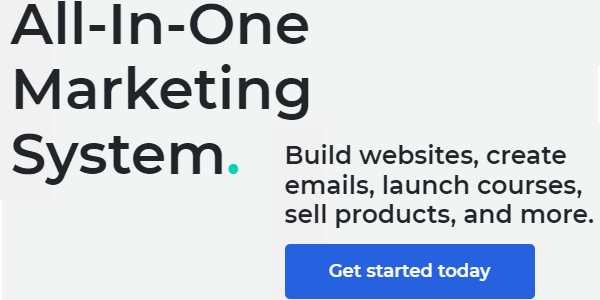
Even if you are not as large as Dropbox, Uber, or Airbnb, you can still benefit from referral marketing. A small business can start gaining significant advantages from a referral program too. In reality, it is one of the most efficient methods to convert potential customers and expand your customer base.
When we talk about “referral programs for small businesses,” what we mean is not a punch-card program or printed referral cards for customers to share with friends. Instead, we are referring to an established method for customers to promote your business and receive rewards for doing so.
Let’s examine why small business referral programs work and how they can benefit your business by exploring the process of setting up this type of program using referral software for small businesses. Additionally, we have provided a list of the best business referral software to assist you.
How successful are small business referral programs
Referral programs are effective due to the fact that individuals place more trust in recommendations from close acquaintances, such as friends and family, compared to any other source of information. Although online reviews are also sought, people tend to have a stronger inclination to believe a friend rather than a review from an anonymous individual.
These recommendations can occur spontaneously, making them difficult to manage. Therefore, why not establish a referral program that provides your customers with a simpler method to share and rewards them simultaneously, formalizing this word-of-mouth marketing?
By streamlining the entire process, a referral program offers customers various methods to refer others, and can automatically distribute rewards when a referral results in a sale.
To enhance the rate at which customers send referrals to your business, prioritize customer service. By exceeding expectations and ensuring customer satisfaction, they will be delighted to promote your business.
How does a referral program work for small businesses
There are several ways in which referral programs can benefit your small business. Below are the four most effective ones, which we have identified.
Referral programs for small businesses build better customer relationships
Building strong customer relationships is crucial for any business, but it is even more vital for small businesses as it can determine their success. Loyal customers recommend your small business to others due to the trust they have in it, the personalized treatment they receive, and the sense of belonging to your community.
After being informed about your referral program, a considerable number of customers are likely to spread the word about your business to friends who possess similar interests. Furthermore, referral programs aid in nurturing stronger connections as customers who refer their friends will experience a sense of contributing to your business’s achievements.
A small business referral program creates loyal customers
Referred customers have a higher likelihood of staying loyal, with an increase of 18%. This is because they come recommended by someone who already knows them, making it more likely that they will enjoy and continue to support your small business.
If you provide appropriate referral incentives, such as discounts or store credit, you are motivating both customers and their referrals to continue patronizing your establishment.
Small business referral programs are cost-effective
A small business must make wise use of its resources. Referral programs, in comparison to other forms of advertising, are easier to implement and more cost-effective. When customers share their positive experiences with friends and family, it brings word-of-mouth advertising that cannot be acquired through monetary means.
By implementing a referral program, you can save money and time on acquiring new customers and avoid reaching out to unfamiliar individuals through conventional advertisements. Instead, you focus on your current customers, who already have a favorable relationship with your brand. These loyal patrons will help promote your business without incurring significant expenses.
Referral programs are considered highly targeted and more reliable than traditional ads because every referral message is sent by a customer, not directly from the brand.
Referral programs create a viral loop for your business
Social media facilitates the rapid spread of information through word of mouth, a process that is further expedited by the implementation of a referral program.
If a customer posts your referral program on social media, their friends will immediately become familiar with your brand.
If some of these friends become new customers, there is a high likelihood that they will also share the referral program with their own friends. As a result, the cycle will continue indefinitely. This phenomenon is commonly known as a viral loop, which is an influential component in enhancing your referral marketing program.
What are the different types of customer referral program
B2C and B2B brands can operate referral programs to motivate their customers or clients to recommend the brand to those within their network.
Although there are often similarities in the mechanics of B2C and B2B referral programs, there are significant differences to consider. These differences include the time frame between the referral and the action, the involvement of more actors in a B2B referral, and the potential for much higher rewards in a B2B referral.
Referral programs, although typically aimed at customers or clients, may also have limitations on their target audience, such as specific customer groups (e.g., loyalty scheme members), employees (offering special deals to friends and family) or business partners, affiliates, and influencers.
Referral programs can drive various actions with value to the business, not limited to sales or subscriptions. Actions like joining a loyalty scheme, downloading an app, or signing up to a newsletter can also be tracked and driven by such programs.
Furthermore, it is possible to differentiate between a dual or double-sided referral program, which provides a reward to both the referrer and the referred-in friend, and a one-sided referral program, which offers a reward only to the referrer or an incentive solely to the referred-in friend. Additionally, there are occasionally programs that do not provide any reward or incentive to either side.
In our opinion, unless there is a specific reason not to do so, we believe that a dual-sided referral program is most effective. This is because the referral rewards serve as a way to express gratitude to the referrer for their efforts. Moreover, studies conducted by Yale and UC Berkeley have shown that such rewards can help overcome psychological obstacles to making referrals. Additionally, research by Harvard has demonstrated that offering a favorable deal to the friend can incentivize a customer to provide a referral.
Tips to building a great referral program
To ensure the success of your referral program, consider incorporating the following elements that contribute to attracting high-quality customers who not only spend more but also ensure a longer-term relationship.
Ask your audience
To ensure that your audience (customers, clients, employees, partners, etc.) show their appreciation in a way other than repeating their purchases, it is important to ask them to refer you. If you fail to ask, they are likely to default to their usual method of appreciation.
Choose your moment
In order to rephrase the given text while maintaining the same meaning and following a step-by-step approach, the following version can be provided: 1. Determine moments when those individuals are most inclined to have a positive perception of your brand. 2. At those moments, inquire about their opinions to understand if their views towards your brand are predominantly positive. 3. Choose appropriate occasions to ask for feedback or assessment from these individuals, taking into account their likely positive disposition towards your brand. 4. Seek their viewpoints when you anticipate that their overall impression of your brand will be favorable. 5. Evaluate the moments when these people are most likely to hold a net positive view of your brand and use those instances as opportunities to gather their feedback or insights.
During moments such as after a purchase (especially a repeat purchase), a renewal, upgrade, or transition from freemium to premium, or after receiving a positive review, a high NPS, showing support for your brand on social media, or having any positive interaction with your store staff, call center, or chat, you have the opportunity to discover potential brand ambassadors.
Ask the right people
First, examine your customers and clients, and subsequently focus on your most devoted, content, and financially rewarding customers. Given people’s innate inclination to form connections with those who have similar values and lifestyles (referred to as passive matching by the Keller Institute), it is probable that your satisfied customers are acquainted with individuals resembling them and can provide recommendations of additional satisfied customers to you.
Be on brand
To ensure that the bond between your brand and your customer or client remains intact, make sure to prioritize your brand’s identity over any supplier’s branding. This means ensuring that your brand’s colors, fonts, tone, and messaging are consistent and in line with your brand, and that any third-party software you utilize is completely white label.
Have a clear CTA
When rephrasing the text while maintaining the same meaning, ensure that the call to action is clear and easily understandable for participants to know the necessary steps to earn a reward or incentive. Avoid adding or removing any information.
Keep it simple
Offer a secure and convenient method for individuals to share content through their preferred sharing tools, allowing for straightforward sharing directly from mobile devices using links or memorable words or codes that can be shared through alternative channels.
Make sure that your design and user experience are simple and easy to use, and continuously strive to eliminate any unnecessary barriers that could hinder referrals or actions taken by referred friends.
Offer a choice of rewards
To effectively target your audiences, employ rewards and incentives that are appealing. Instead of restricting them to a single option, provide a range of rewards and incentives. Additionally, periodically vary your rewards and incentives.
Offer valuable rewards
Consider offering incentives that are highly valued by both the referrer and referred-in friend, while being cost-effective for your company. Take inspiration from DropBox and Evernote, which offered additional online storage. Additionally, if your brand enjoys strong customer loyalty, you might also consider providing swag such as branded t-shirts, mugs, or online status badges.
Pay out promptly
In order to maintain your margins, implement any required post completion rules, such as paying only after cooling-off periods have passed. Your goal should be to pay out rewards as promptly as possible to keep your referrers engaged and encourage them to refer again.
Use smart psychology
Utilize gamification and clever psychological techniques to motivate participants to repeatedly share and encourage their referred friends to immediately take action. This can be achieved through the implementation of tiered rewards, booster campaigns that create a sense of urgency, the fear of missing out (FOMO), and league tables.
Keep it fresh
To prevent your campaign from becoming stale, make sure to periodically update it with various rewards, messaging, and look and feel.
Improve your reach
To ensure that your audience is aware of your referral program and knows where to find it, utilize activation and discovery principles to market your campaign across all touchpoints. This includes, at the very least, promoting it on your website, in emails and newsletters, on your blog, and through social media channels.
Remarket and remind
To target individuals who expressed interest but did not make a referral or complete a transaction, you can consider reminding them about the offer, as well as the available rewards and incentives. Alternatively, if a referrer has not referred anyone in the past few months, you could offer an additional reward incentive to encourage them to make a new referral.
Analyze and improve
Ensure that you have advanced reporting and analytics in place to monitor the success of your campaigns and comprehend the factors that greatly impacted your progress. Utilize the comprehensive analysis obtained from your reporting and analytics to make necessary adjustments and experiment with all components of your system in order to enhance conversion rates. Continue to conduct tests and make improvements based on the results obtained.





